Hearts of Iron IV: An Introduction
A primer on a fascinating yet cancerous gaming subculture and its yet more nefarious modding sub-subculture.
Mercury: Here's a petition from the Peace Society. They complain that there are no more battles.
Mars: What?!
Thespis, the Deputy Jupiter: What’s this about there being no battles?!
Timidon, the Deputy Mars: I’ve abolished battles; it’s an experiment.
Mars: Oh, come! I say—
Thespis: Quiet then! What’s this about battles? And why is this of concern to the Peace Society?
Timidon: You see, you told us on taking office to remember two things: to try experiments and to take it easy. I found I couldn't take it easy while there were any battles to attend to, so I tried the experiment and abolished battles. And then I took it easy. The Peace Society ought to be very much obliged to me.
Mercury: Obliged to you? Why, confound it! Since battles have been abolished war is universal!
Timidon: War universal?
Mercury: To be sure it is! Now that nations can't fight, no two of 'em are on speaking terms. The dread of fighting was the only thing that kept them civil to each other!
Thespis: Very well. Let battles be restored and peace reign supreme!
Introduction
The other day, I came across this screenshot on the subreddit for Hearts of Iron IV modding, which greatly bothered me:
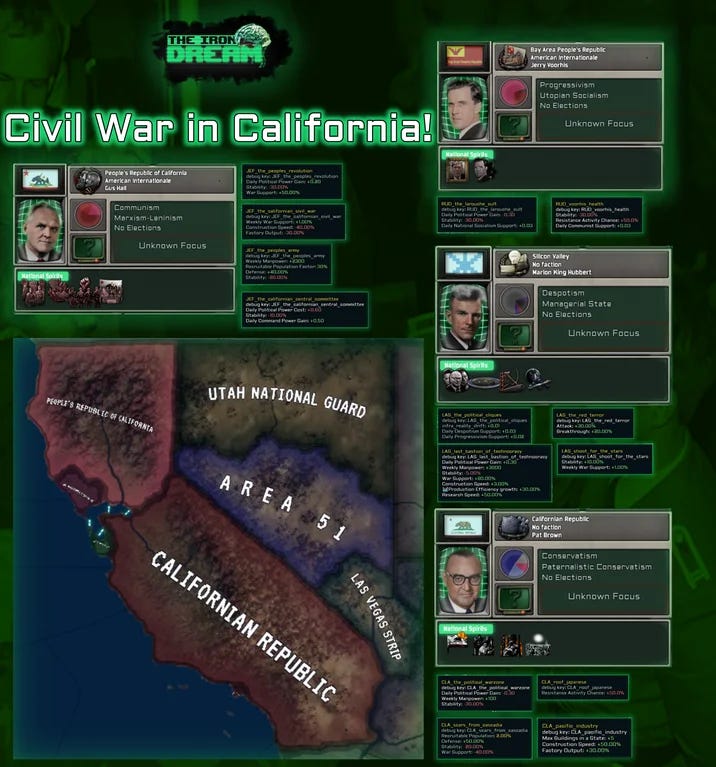
I’ll go into what this image contains that upsets me so much later on, but let me step back first. My regular readers will know that I have a penchant for American collapse scenarios in speculative fiction, as I am currently undertaking a massive project covering a hypothetical post-apocalyptic United States related to my book series. If you don’t read my work and are just here because you saw HoI4 in the title, then check it out! If you like Hearts of Iron, you’ll love the Fallen Continent series. But I digress.
Most of you reading this probably have a few questions by now. What the heck even is Hearts of Iron? What does modding have to do with it? Why do I, a post-collapse American fiction author, get so angry when I see most post-collapse American fiction scenarios? And why am I using that thrice-wretched website, plebbit? This article aims to answer those questions. If you’re a normal internet user who has no idea what the hell Hearts of Iron is or why everyone who plays it is so weird, I’m here to explain. And strap in, because you’re in for a long ride.
Because this article is so long (about 20,000 words), I’m going to divide it into several parts so that it’ll be easier to read and digest. This first part is just going to cover the fundamentals of Hearts of Iron IV and grand strategy gaming. See the index at the bottom of the page for links to the next articles in the series.
Grand Strategy Games
Hearts of Iron IV is the latest in a series of strategy games produced by Swedish game studio Paradox interactive. They specialize in Grand Strategy games, which combine the top-down management of turn-based strategy and 4X games with the real-time management and attention to detail of RTS games. Basically, in these games, you control a historical entity like a country or dynasty and guide it throughout the game’s time period by managing its armies and governmental systems. These are massive, global-scale games where you have to take extremely minute factors into account, and the game is split between staring at the world map screen and staring at multitudes of complicated menus concerning matters like politics, trade, diplomacy, technological research, and logistics.
Paradox has four main series of grand strategy games, each concerning different historical eras. Crusader Kings is set in the middle ages, with a heavy focus on individual kings and princes and the complicated web of dynastic interactions between them. Europa Universalis during the early modern era, with the Renaissance, Protestant Reformation, colonization of the Americas, and political evolution of dynastic kingdoms into modern states as key areas of interest. Victoria is set during the Victorian era and is all about industrialization, demographic change, great power diplomacy, and revolutionary upheaval. Hearts of Iron is the most popular series of the four and is set during the Second World War. In Hearts of Iron IV, you take control of a country, gear up its military industry for war, align yourself with one of the big three sides (Western allies, German axis, or Soviet Comintern) or try to go your own way, and then spend the rest of the game waging an all-out total war with massive frontlines and heavy-duty chains of industrial production.
Part of the fun of these games is the expansive modding scene. All of these games have huge mods that create entirely new scenarios for the player to explore. Each of the series has a few flagship mods that are fan favorites, thanks to their rich stories and interesting gameplay possibilities.
Crusader Kings has “After the End,” set in a post-apocalyptic America that has reverted to medieval levels of technology and societal development. You can revive the Confederate States as a replica of the Holy Roman Empire, follow the Americanist cult of the Founding Fathers, go on Viking raids across the Great Lakes, or drive the white man back as resurgent Indian tribes. Even more popular is the intricately detailed Game of Thrones mod, which creates a faithful replica of the massive ASOIAF universe.
Europa Universalis IV has several home run mods, like the discordant, pagan realm of Post Finem, where the Carthaginians crushed the Roman Republic in its infancy, or Ante Bellum, with its religious chaos spanning Europe and the Middle East and throwbacks to the early middle ages. The Third Odyssey lets the Byzantine Empire escape Turkish conquest by fleeing all the way to North America before 1453. My favorite, however, has got to be Anbennar: a totally original fantasy mod that explores what a high fantasy world would look like with the real historical developments that carried Europe out of the middle ages and into the industrial revolution.
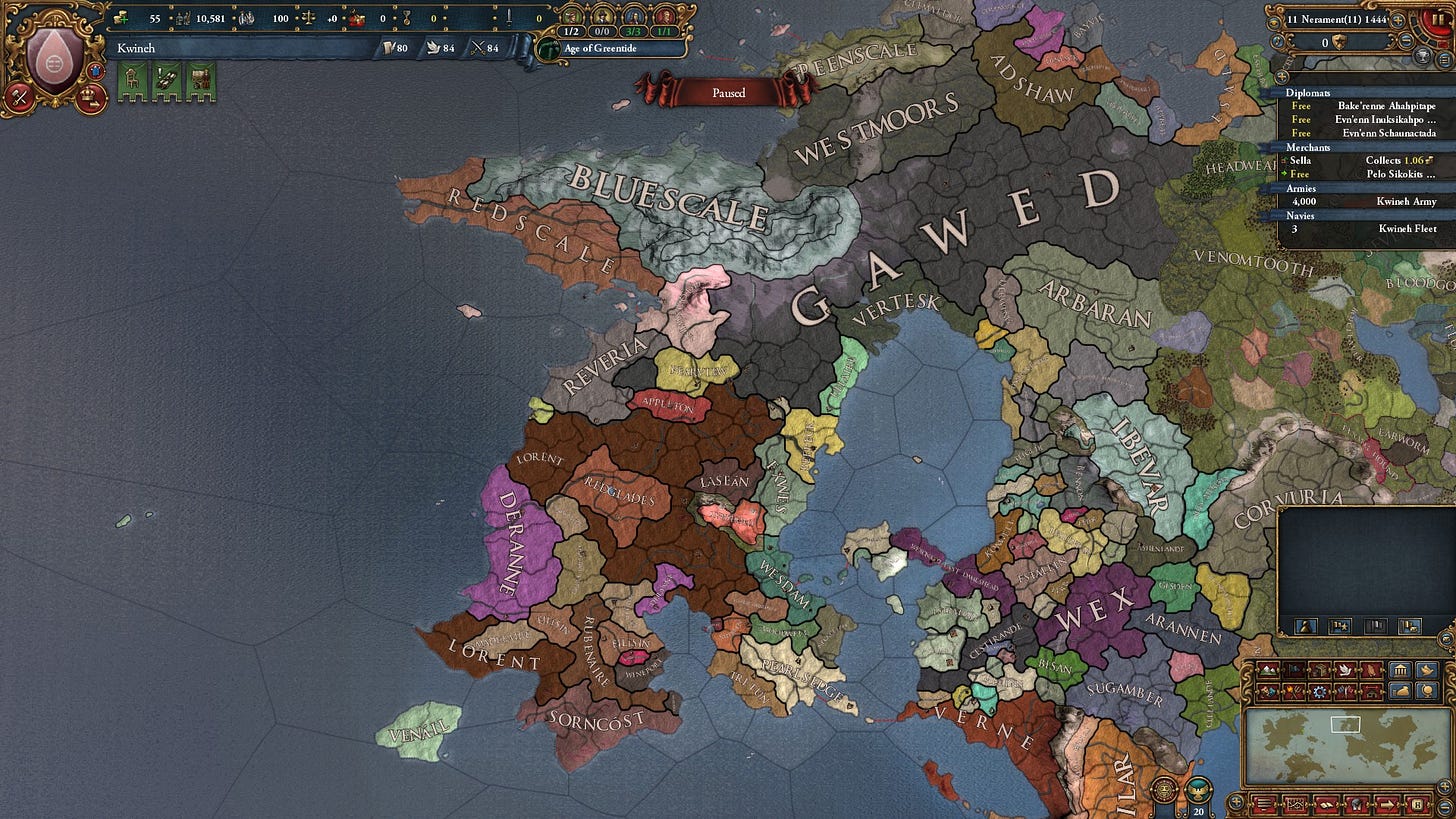
Victoria II has a smaller modding scene, but there are still a few heavy hitters. The best one has got to be Divergences of Darkness, a topsy-turvy world where industrial-era Europe looks totally different. England and France unify to create a hybrid “Anglois” culture. Denmark unites Scandinavia and becomes a colonial powerhouse. Castile and Portugal forge the Spanish Empire, while the Mediterranean becomes an Aragonese playground. Belgium and China colonize the Americas. Russia remains a disunited realm of squabbling princes. It’s a madhouse.
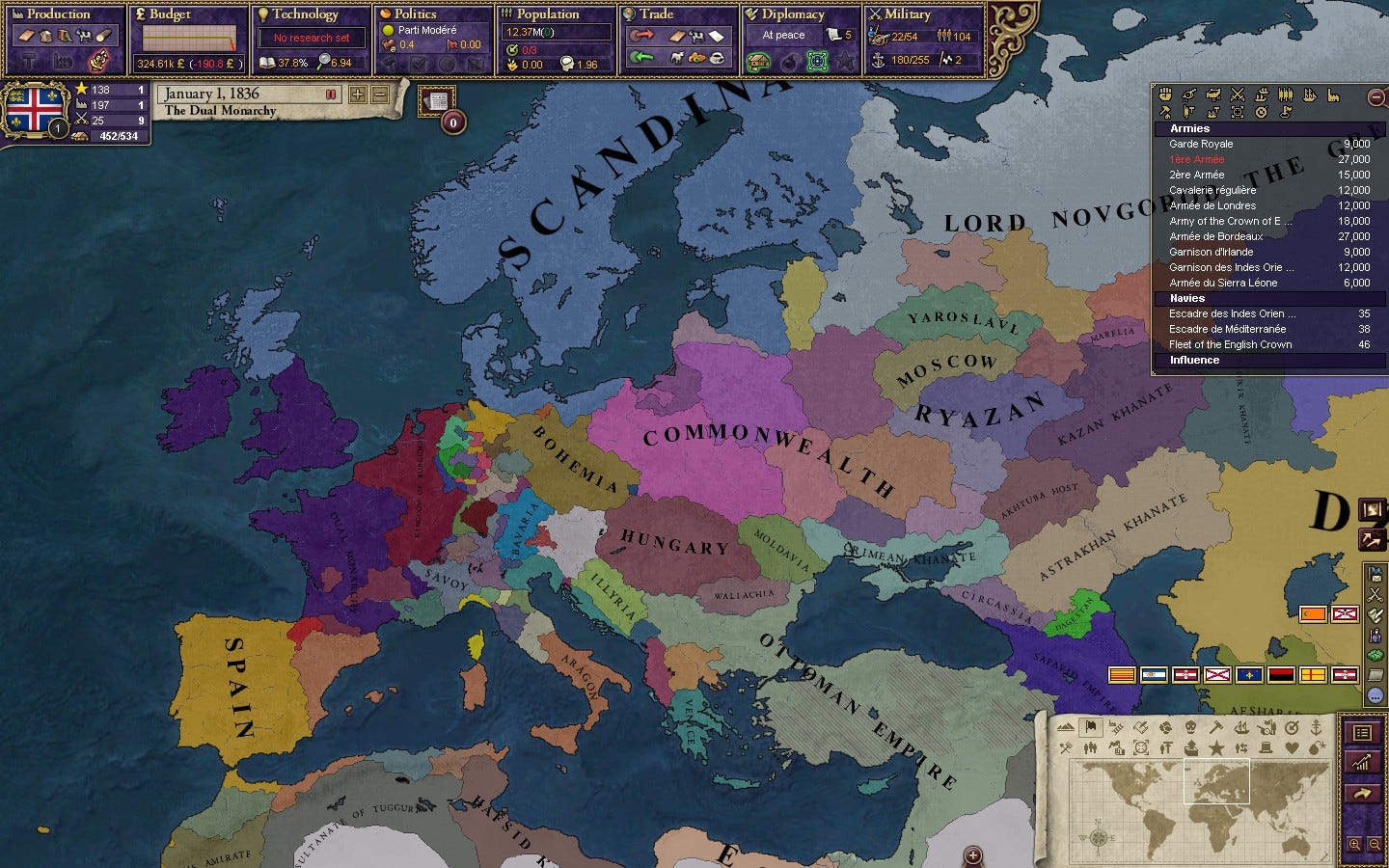
The Hearts of Iron IV modding community is larger than all of these, perhaps all of them put together, and it has its high points and low points. More of the latter than the former, I’m afraid to say. This is partly due to the game’s mechanics themselves, and partly due to the setting itself. Let us begin with the former.
The Noob-Friendly Game
Paradox grand strategy games have always been difficult for newcomers to get into. They’re extremely obtuse games, and some of them can take dozens of hours to learn how to play. Not only do the games have dozens of interlocking systems, but these systems are based on historical events and phenomena that the player might not know going into their campaign:
Why am I losing so much money in EU4? Whoops, it’s because you’re playing as Norway, a country heavily dependent on the North Sea fish trade for its income. The Protestant Reformation just happened, and Protestants don’t eat as much fish due to their laxer fasting requirements, lowering the price of fish in the worldwide trade market. Better join the counter-reformation to crush the Protestants, or try to conquer England and get in on the textile trade that’s just starting to get really lucrative, or explore the New World and colonize Canada and New England to monopolize what’s left of the fishing market.
The open-ended nature of grand strategy games means there’s not an explicit win condition, unlike RTS games where you blow up the enemy base or 4X games where you need to get a high score in a set number of turns. You have to set your own goals, and those goals won’t be clear unless you’re an experienced player or an avid student of history. Things were getting really, really bad around the time Hearts of Iron III came out. Not only was the game not mod-friendly, but it looked like this:
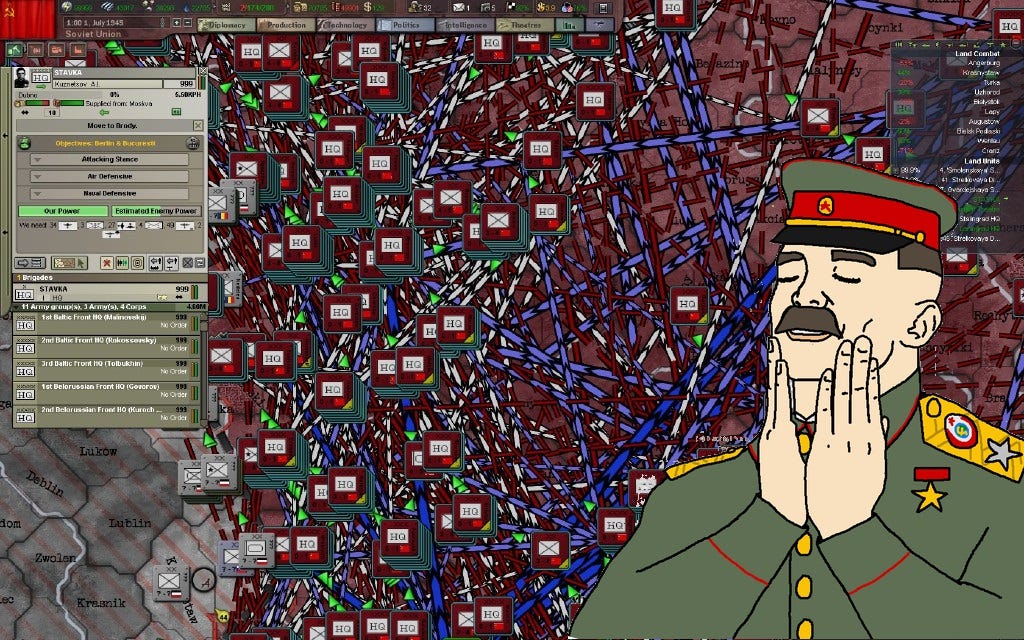
Nobody wants to play that. It’s actually kind of fun once you get the hang of it, in that classic wargaming autist kind of way, but it requires such a huge time investment that the pool of players who will buy your game remains very small. Victoria II looked even worse.

Very few people want to play games that look like this, so Paradox got wise and began simplifying their games for a wider audience. They started with Crusader Kings II, and it was a huge hit. It’s still a super deep strategy game, but its systems are easier to understand and you actually kind of know what you’re doing within a dozen hours of play. The more complicated systems are still possible to learn within a hundred hours of normal gameplay. Also, people really liked the leader portraits so you can see what your character looks like and put yourself in his shoes. You’re not just looking at a map, you’re looking at Count Farquaad III von Bigglesworth and his ugly CGI mug, and that adds just enough of a human element that it increases the appeal to your average gamer tenfold. This will have important consequences later on.
They took the simplifying process a little further with Europa Universalis IV. They didn’t bring in leader portraits for this game—it just wouldn’t make sense, right? You’re not playing as a specific king and his household this time, you’re playing as the entities that would eventually crystallize themselves as Westphalian nation states. You’re not King Louis of France, you are France, coordinating its movements throughout the age. But otherwise, the game was even simpler than before. The complicated alignment sliders were replaced by a “mana” system, where your state has three types of “monarch points” it can use to accomplish actions. You get a small trickle constantly and can gain or spend more through special events and interactions with the game’s systems. The result is a very arcade-like, board game feel that makes EU4 a lot of fun in multiplayer. It was the easiest game to learn yet, and it served as my introduction to grand strategy games.
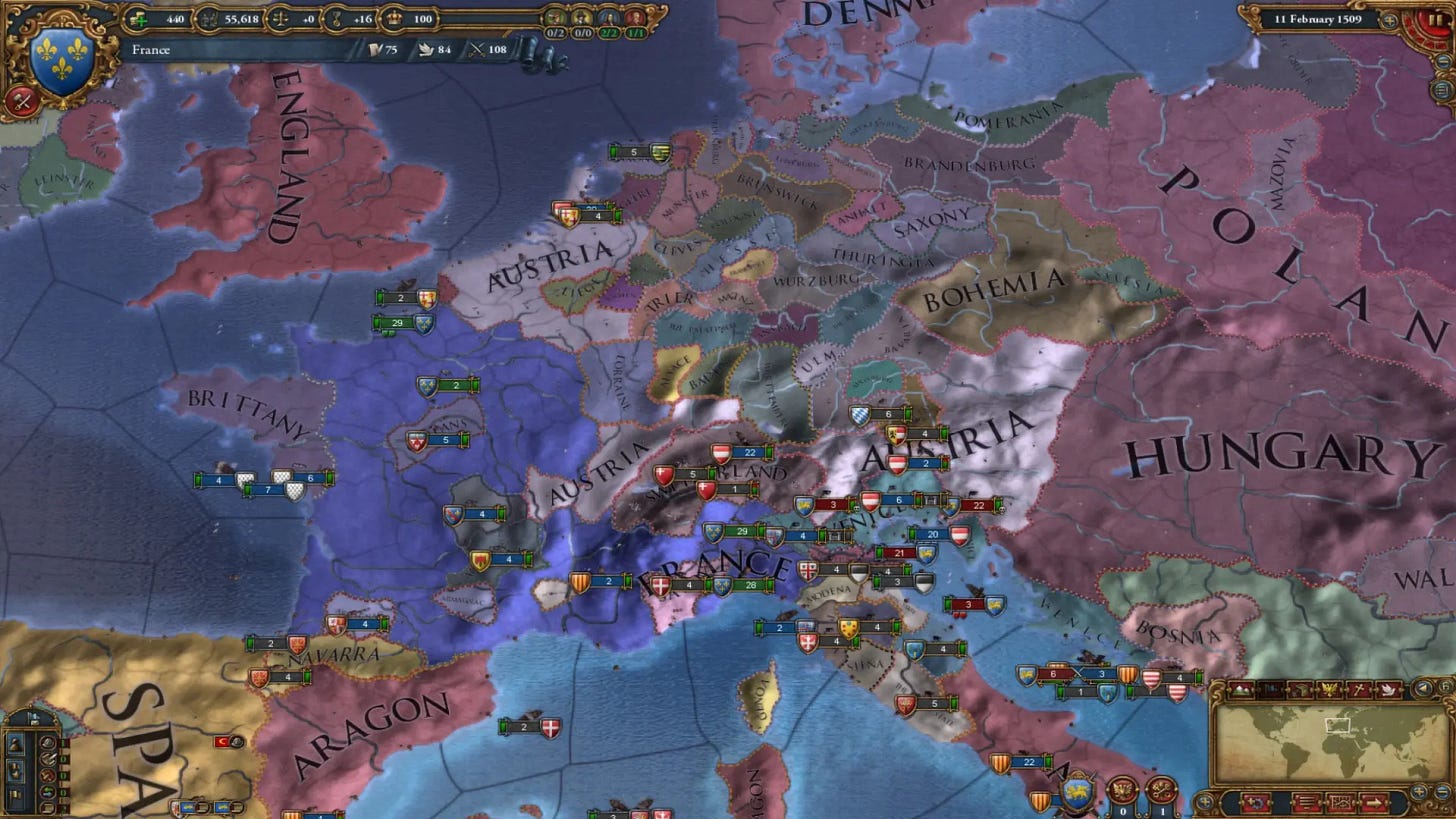
After the success of EU4, everybody wanted to see what Paradox would do for Hearts of Iron. They were going to take the infamously opaque Hearts of Iron III and make an accessible sequel for it! Hip hip, huzzah! So, when the time came for release in 2016, what did the highly-anticipated game look like?
The result was streamlining beyond players’ expectations. The HoI4 playerbase has grown to accept it now, but it was a very controversial release for the time, and most people who got the game on launch felt that the game had been stripped of features and over-simplified to the detriment of a deep grand strategy experience. The complicated order of battle system from HoI3 (hated as it was) was replaced by a preposterously elementary successor. All you do is click on your divisions, put them in an army commanded by a general, right click on the enemy’s border, draw a big arrow pointing in the enemy’s direction, and click the “go” button. The divisions move on their own and fight the war for you. The game’s interface was simplified and replaced with big, bright, easily clickable buttons. The very tiny black and white leader portraits, something of an afterthought in previous games, were now replaced with humongous cartoon leader portraits in a giant political screen. Veteran players thought the UI changes were garish and immature, similar to how M14-wielding veterans in Vietnam initially distrusted the modern assault rifle as the “Mattel-16.”
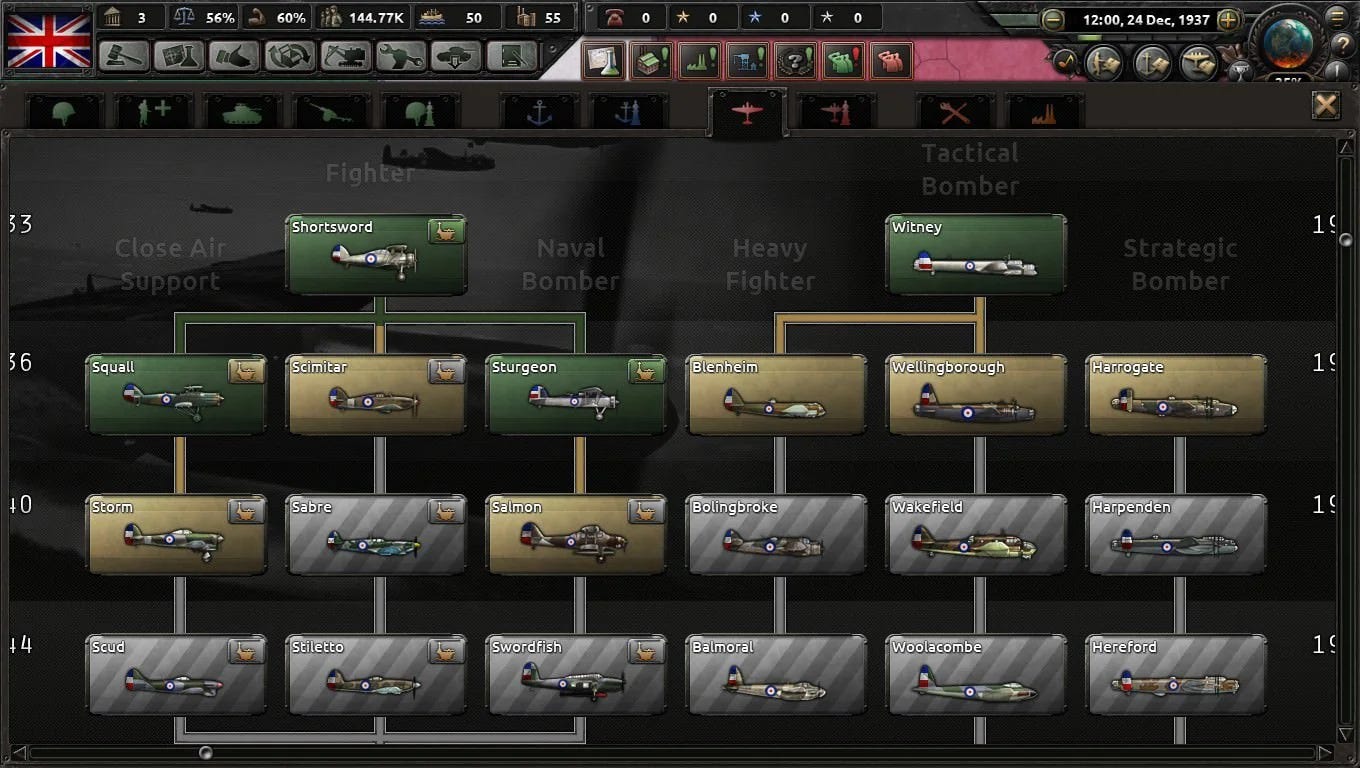
Paradox veterans disliked these changes, but new players loved them. These visual designs brought on entirely new groups of people to the series, expanding the fanbase beyond the traditional hardcore strategy nerd demographic. The big leader portraits appeal to people who like historical roleplaying, and the big technology icons appeal to military history autists who can speak for thirty minutes about how the higher explosive filling content of the Soviet armored-piercing anti-tank shell enabled it to more efficiently defeat the German panzers. When you bring on new blood and expand your playerbase, there’s bound to be some conflict between the rookies and the oldheads. There’s a very sharp divide between Paradox players who got on board before and after Hearts of Iron IV’s release—it represents a critical turning point for the franchise, even if Paradox had started down that direction as early as CKII. But all these UI and battle improvements were nothing compared to Hearts of Iron IV’s National Focus system.
The National Focus Tree
Enter: the National Focus tree. The developers implemented this branching tree in order to represent various national undertakings and priorities set by the powers of the Second World War. Stuff like Germany annexing the Sudetenland, France building the Maginot Line, Japan deciding to invade the East Indies instead of Siberia, America trying to claw its way out of isolationism back onto the world stage, and so on. How this works in-game is that you have a screen within the politics menu that looks like the picture above. You have this branching path of national focuses, and you can complete one at a time before moving on to the next. Some of them are mutually exclusive, or have certain requirements you need to meet before you can take the focus. They can take anywhere from 7 to 70 in-game days to complete, but usually last for 35.
Once the timer ticks down and the focus is completed, you get some kind of bonus. It could be a buff for your troops, free military equipment, bonuses to research speed for your tech tree, free factories or forts, a casus belli you can use to instantly declare war on another country, or really anything that the game’s code can allow to happen. Very importantly, it can allow a country to switch to a different ruling party. If you want to get rid of Hitler and restore Kaiser Wilhelm, or make Douglas MacArthur dictator of the USA, or plunge Russia back into another civil war, this is the the screen where you accomplish that. The focus tree is divided into many different sections: political, diplomatic, industrial, military organization, and technological research. Everything you do in the game, you will be relying on bonuses accrued by completing focuses in the focus tree.
This is where the game design becomes seriously flawed.
The focus tree is necessary for everything you do in the entire game, but it’s not intrinsically fun to use. You click on a button, leave the menu, and several minutes later you’ll get a notification telling you to pick another focus. It’s total skinner box gameplay. You click focuses to get more focuses. Sometimes the reward for the actual gameplay—fighting the war—is to meet conditions that allow you to pick more focuses. Because HoI4 on its release date was so bare-bones and stripped of features, let alone unique flavor to flesh out the various countries, the national focus tree was the only thing that made countries feel unique and made the gameplay feel rewarding. The problem is that it was all backwards.
The developers realized what they did wrong, but it was too late for Hearts of Iron. Later on, as they continued to release DLC for Europa Universalis IV, they implemented a much more enjoyable system: the mission tree.
The mission tree is basically the national focus tree in reverse. Instead of doing the focuses to get rewards to play the game to do more focuses, you play the game, get the rewards for finishing the missions, and then do even more missions. That sounds almost exactly the same, but it’s not. Let me elaborate.
Imagine you’re starting out EU4 as the Principality of Moscow. You begin with a basic mission: build an army big enough to go to war with the neighboring Russian princes. You build the army, and boom. Mission tree reward: territorial claims on all the Russian princes. Now you get a bonus helping you invade Russia and become the Tsar. Guess what? That was the next mission in the tree, and now you get another reward: goodies to help you pacify the land you just conquered, and even MORE claims on more land, now in Siberia and the Ukraine. The mission tree guides you on as you conquer all the territories Russia historically conquered, and then challenges you to go even further at the end of the tree with claims on lands like Turkey, Sweden, and California. The EU4 mission tree wants you to be an active player who is always striving for the next goal to achieve.
In HoI4, the national focus tree just treats you as a passive observer, clicking a skinner box every few minutes to get a generic reward. There are seldom any goals you have to achieve to take the next focus, and the focus reward does not help push you on towards achieving your goals. HoI4 players basically tricked themselves into thinking that the most boring, passive part of the game was the most fun and rewarding thing in it. The most fun and rewarding thing in a wargame should be fighting the war, not reading text dumps about how you’re going to gear up to fight the war. The game itself needs to be intrinsically satisfying to play, not extrinsically satisfying to be told you’re succeeding in it.
Part of the reason for this is the structure of the games themselves. In Europa Universalis, you’re always either at war or preparing for the next war, whittling away at your enemies one province at a time. You’ll fight these huge wars where you have to haggle at the negotiating table to sneak Luxemburg into your list of conquests.
Because your expansion is broken up into lots of wars that give you incremental gains, the mission tree system can reward your incremental progress and give you just a little boost for the next stage of your expansion. Hearts of Iron is different—it’s a World War II game. That means there’s basically only one or two wars you’ll fight in the entire game, and you have to totally dominate your enemy and take it all in one fell swoop. The national focus tree can’t reward you for making progress because you haven’t actually made any progress yet—that won’t happen until 1945. And once the war’s over, any rewards you get won’t matter anyway because the game is over. So you have to just sit there, passively going down the focus tree because of the game’s all-or-nothing structure.
The first big problem with the Hearts of Iron IV modding scene is that it primarily revolves around building large, complicated national focus trees. The second problem is what is contained within them.

The Political Wish-Fulfillment Simulator
The next big thing I want to get into about Hearts of Iron IV is politics. This section should be shorter than the last, and then we can get into the nitty gritty of HoI4 modding, where the real autism is. The thing that separates Hearts of Iron from other grand strategy games is how recent it is. There are still people within living memory of the game’s events (one of its leaders, Tsar Simeon II of Bulgaria, is still alive). The ideological and geopolitical issues that drove these conflicts are still debated today, and World War II has basically become our national foundation myth. Killing a bunch of Protestant rebels as 1600s France in EU4 doesn’t strike a nerve because the French Wars of Religion were so long ago and the conflict doesn’t affect how we think and live in our daily lives. World War II is different, and you don’t need me to explain why and how.
As a result, Hearts of Iron IV attracts more than just strategy game nerds or military history autists. It attracts political ideologues who want to simulate the victory of their preferred side over the other, and the results are polarizing. There are pretty neatly two types of players who fit into this category: people who love Nazi Germany and want to fantasize about them winning, and people who hate Nazi Germany and want to fantasize about defeating them. Most of the people in this latter type happen to be communists or belong to some other far-left affiliation and want to similarly indulge in ideological fantasies about their side not just winning the most politicized conflict in human history, but utterly blowing them out.
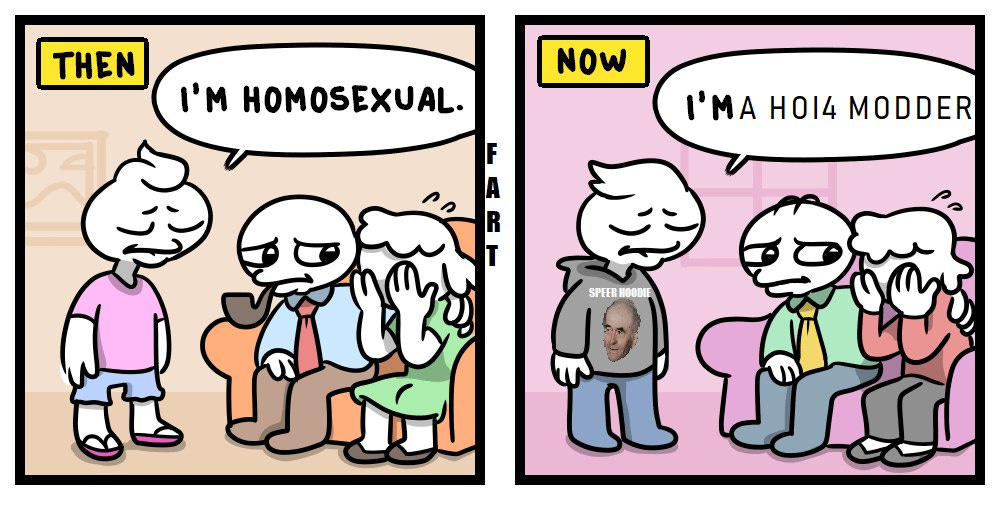
This is where the focus tree system starts to really come into play. When the game first launched, the focus trees were just meant to help you procure industrial and research bonuses to boost the development of your army. Like if you really wanted to create an air force-focused army, you could rush the air force branch of the tree to boost your planes. Or maybe you want a strong enough navy as Japan to go toe-to-toe with the United States, so you rush the navy tree. But speccing into these branches will mean you lose out on the wider pool of bonuses you could accrue if you pursued a more even distribution of focuses.
It didn’t take long for developers and modders alike to realize you could use the focus tree to facilitate political changes in the country. Take X line of focuses in our new political branch, and you can switch between political ideologies. This was mostly for gameplay reasons, at first. Hearts of Iron IV is not big on ideologies by default, and only has three very vaguely-defined ideologies: democratic, fascist, communist, and non-aligned. These really represent geopolitical alignments more than they do actual political ideologies. Democrats side with Britain, France, and the USA, fascists side with Germany, communists side with the Soviet Union, and the non-aligned powers need to either switch to an ideology and pick a side or have the tough time of trying to fight another great power all on their own. For example, if you’re playing as Poland, you could switch to communism to get Russia to save you from the Germans, or stay non-aligned and fight the futile war against both Moscow and Berlin.
Hearts of Iron modders quickly expanded this system into something that actually tries to represent real-world ideologies, to titillate the senses of the political wish-fulfillment crowd. It started out nicely, but soon got out of hand. At this junction, I should mention that Hearts of Iron IV came out in 2016, which everyone kind of recognizes as the year when Americans started to lose their marbles, politically.
I had to split this article up into several parts, so see the link below for our examination of Kaiserreich, the first big alt history mod for HoI4.
Index
This is Part 1 of the HoI4 modding series on my Substack. Click here for the next parts.
Part 1: Introduction
Part 2: Kaiserreich
Part 3: The New Order
Part 4: Toozer Mods
Part 5: Brainrot





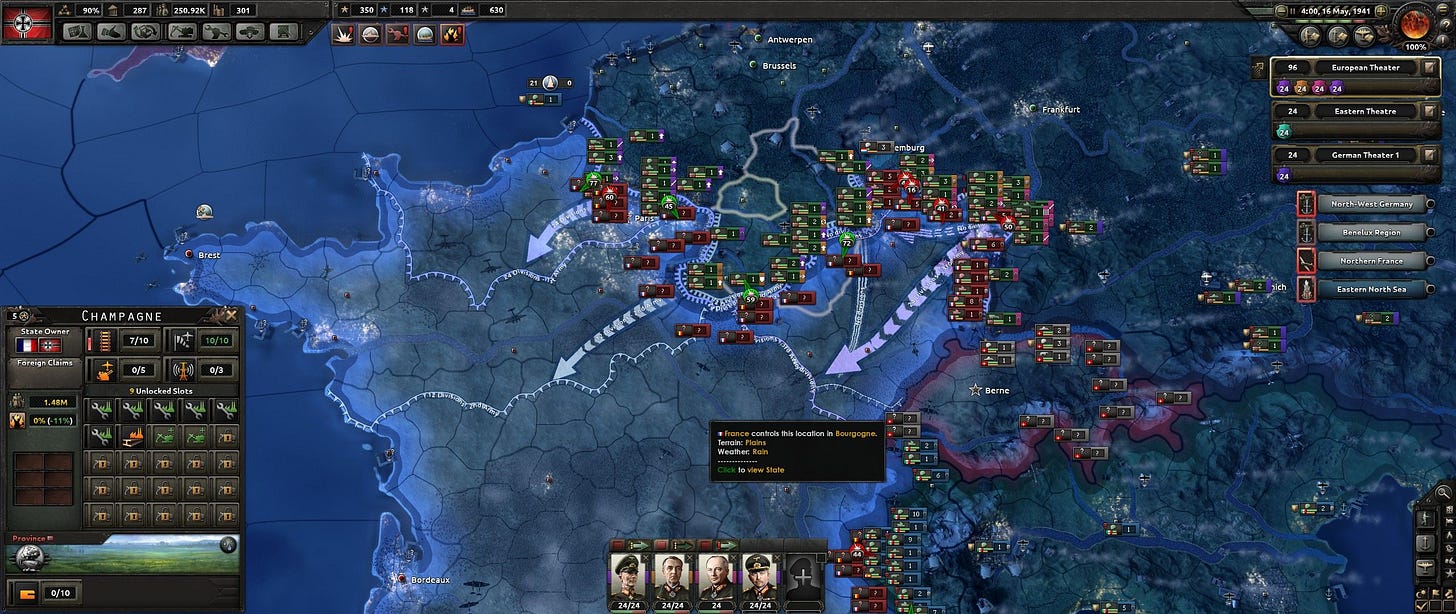
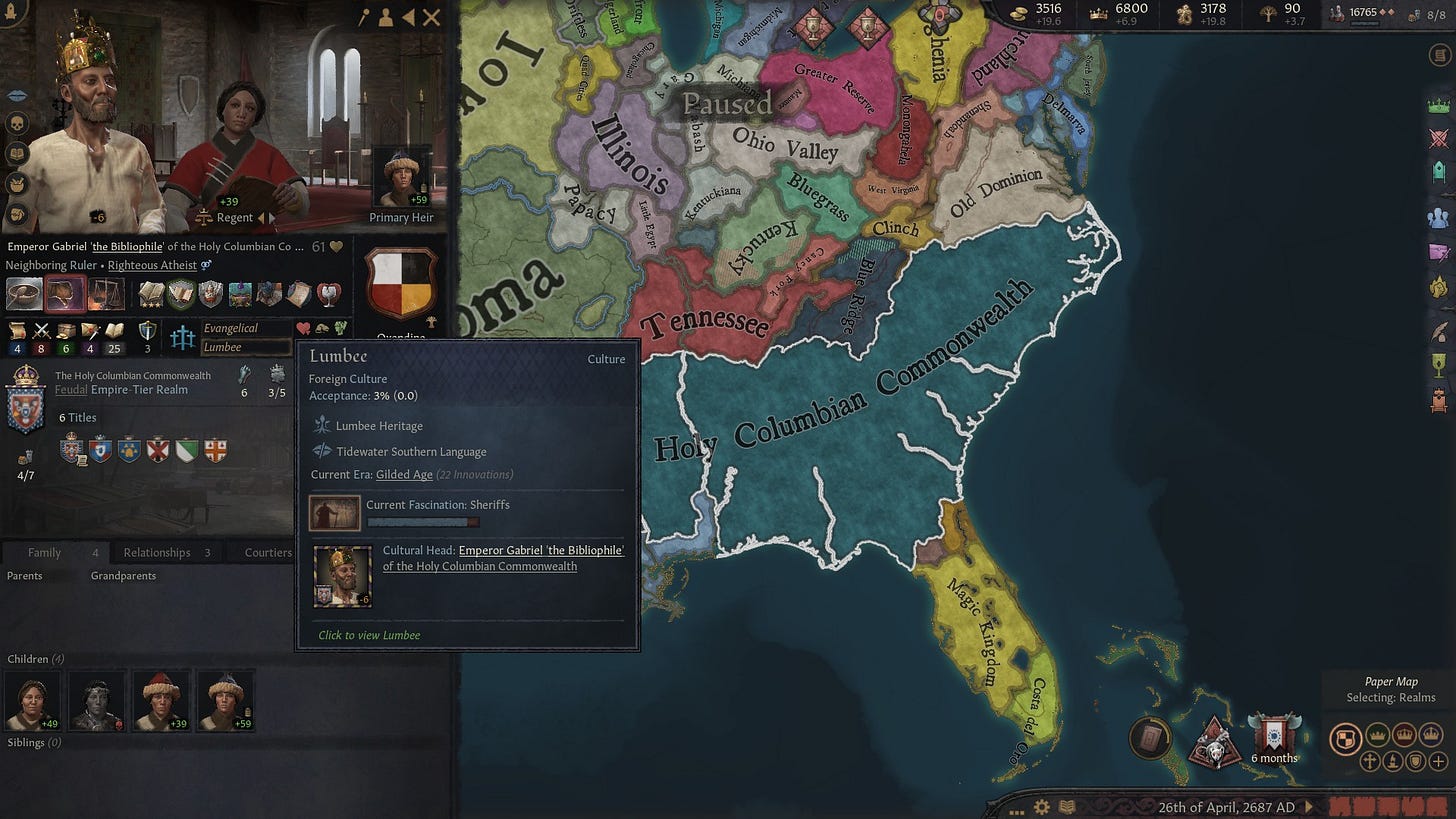
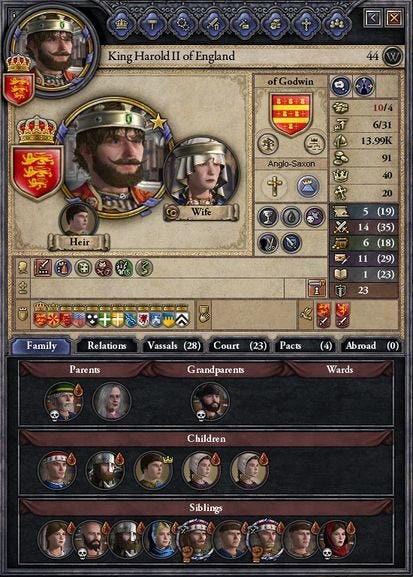

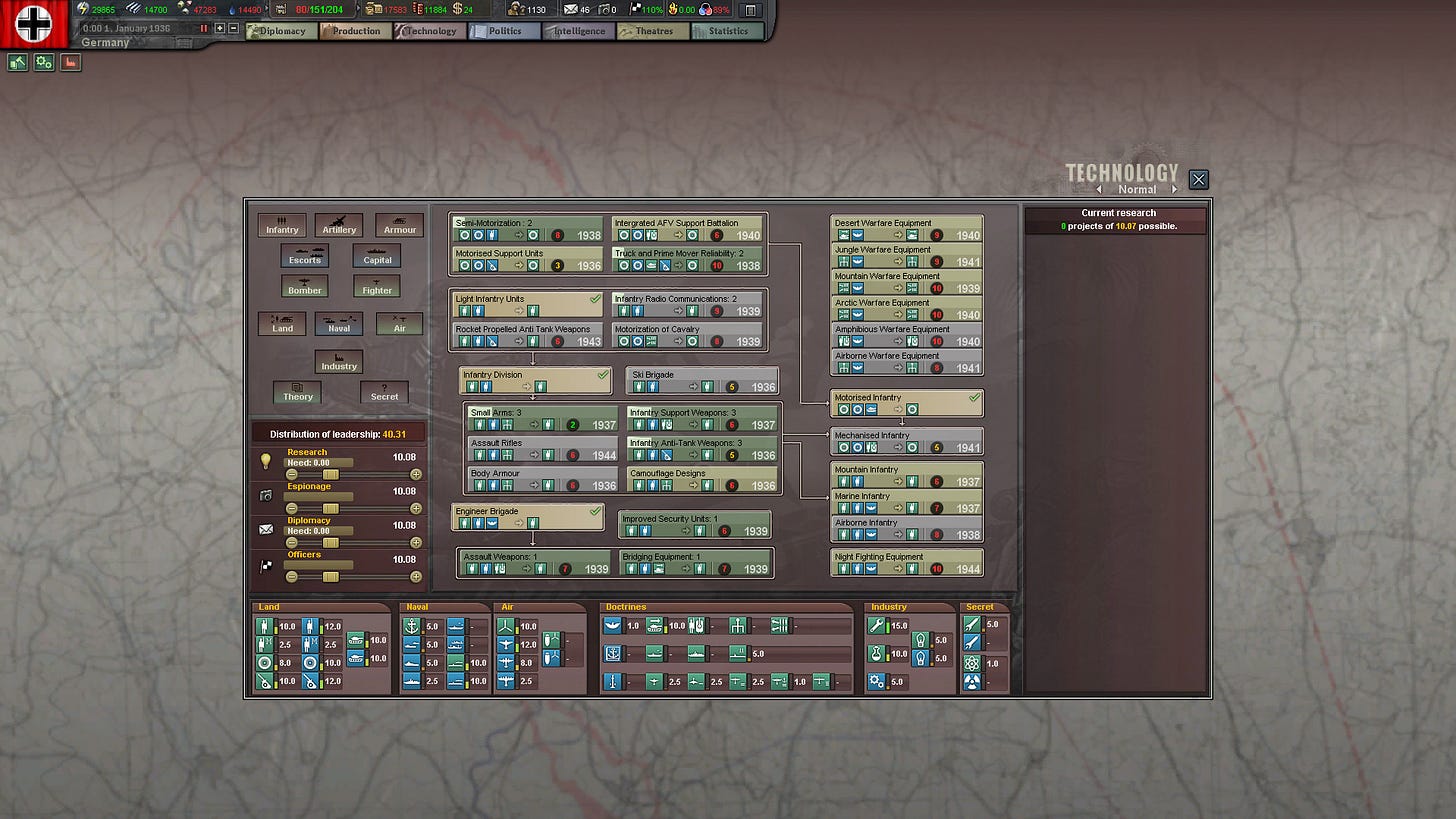
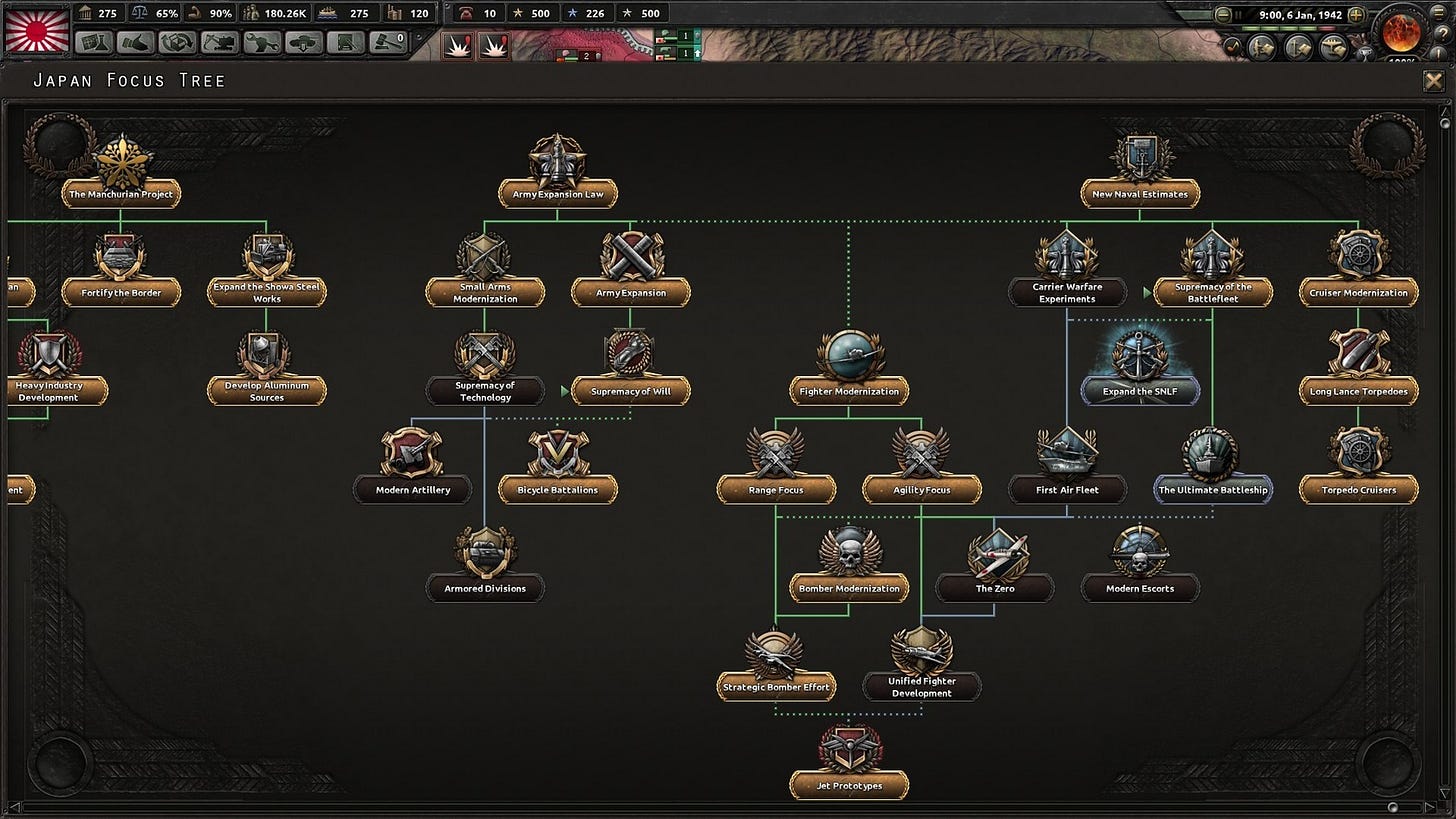
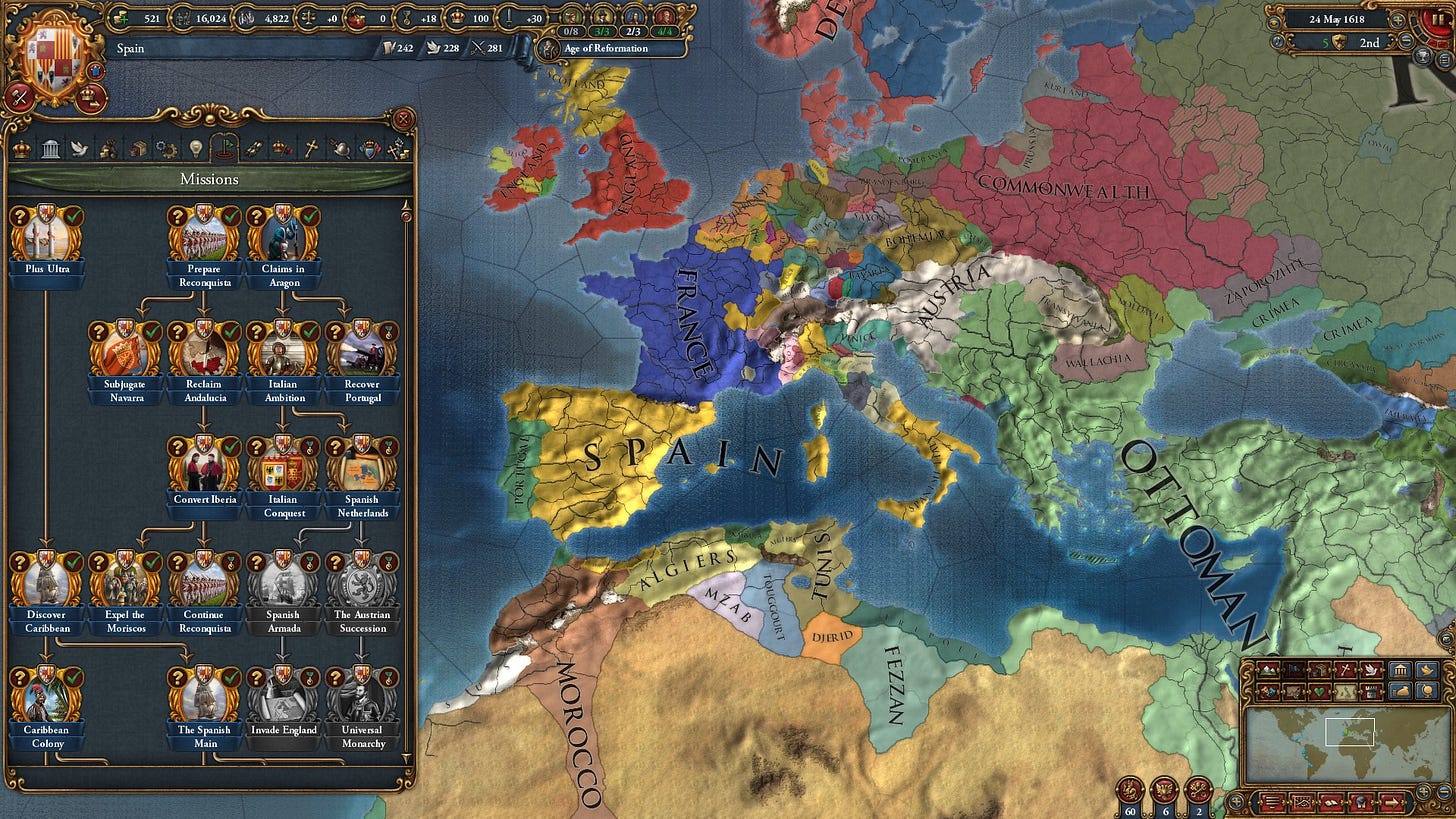

I had an idea for a PETRIXXX Show HOI4 mod with a bunch of shit like a cod zombies mode and every world conquest ending in revelations & judgement day, with the exception of playing as Jeb Bush. It would really fit the "nintendo & valve characters as monarchists vs omori & nu-smg4 characters as communists" dynamic of my machinimas.
Really enjoying the Fallen Continent series.
This was great as a primer, looking forward to the next one.
I played a lot of Vic2, Eu4 and ck3 (occasionally still do but less time in my late 20s with a job and flat and relationship!), and dabbled in Hoi3 and then 4 when it came out, including some of the mods in your series. I think a game somewhere between the two would be idea.